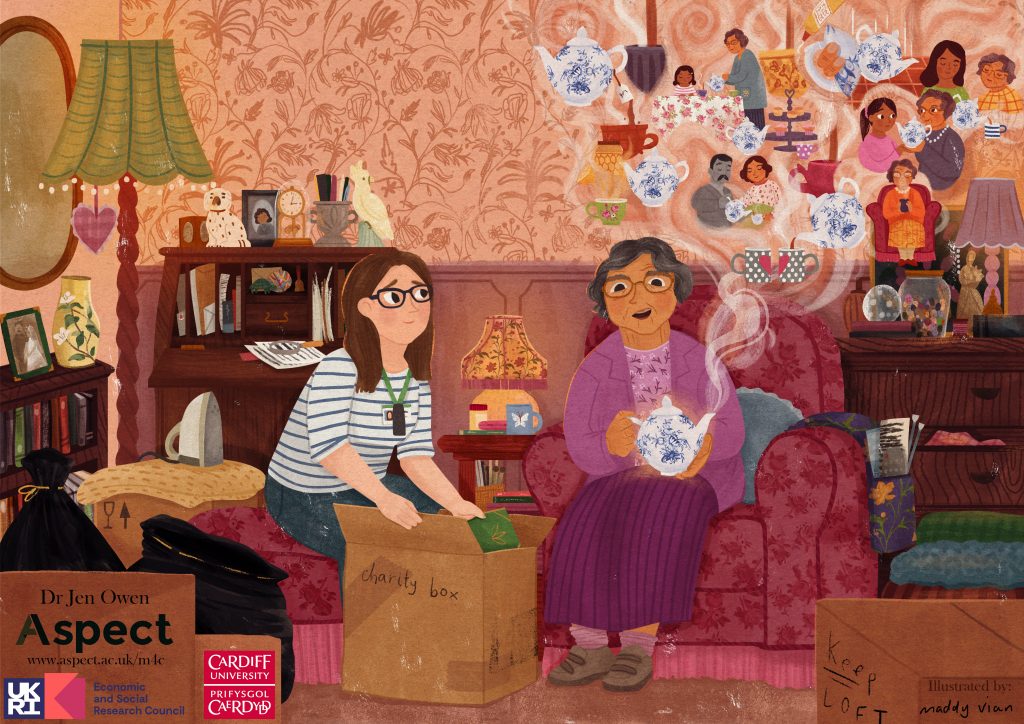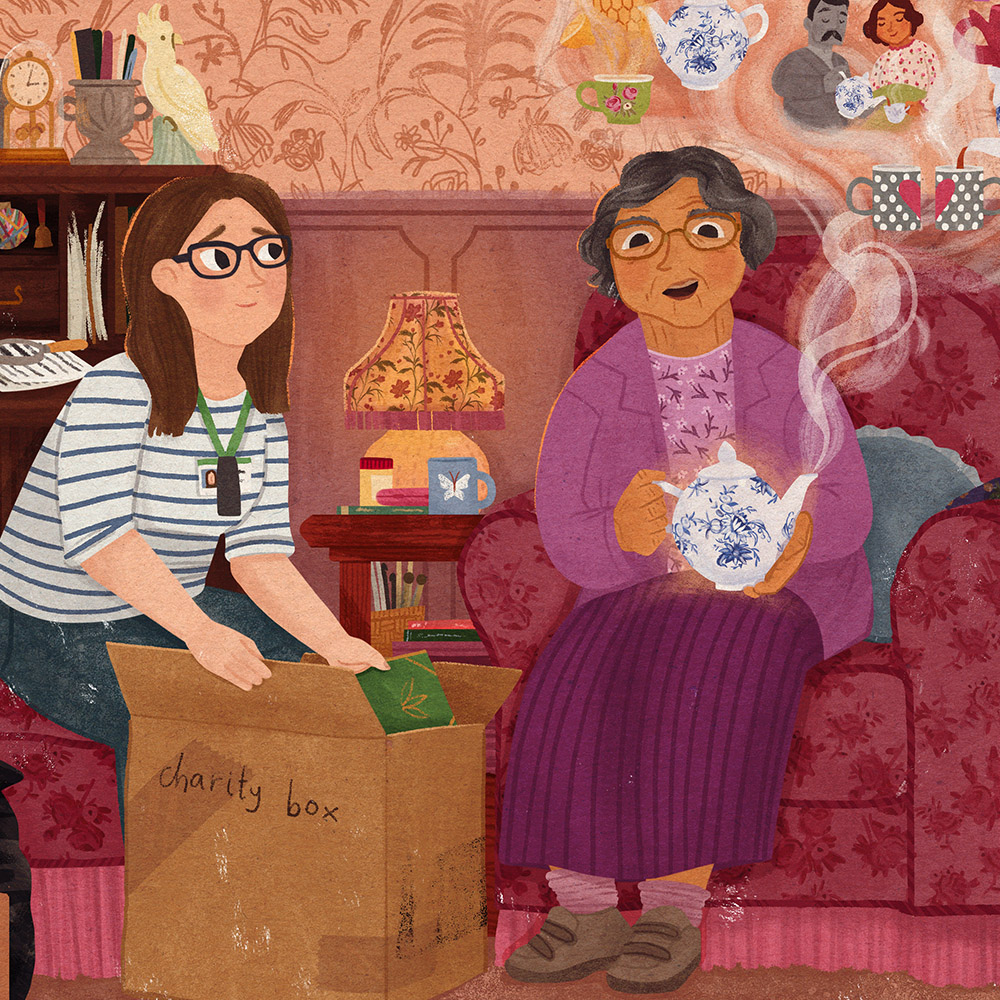Research Method: Object-oriented Interviews
Object-oriented Interviews involve talking about and with objects to learn about the everyday lives of different people. The interview might happen around objects which have been deliberately selected by the participant or interviewer, or it might unfold in a more ad hoc way, talking around a loose collection of objects.
Either way encountering objects happens as a result of a participant-led tour of their space or when undertaking a task together, such as sorting or cleaning. Object-orientated interviews may take place in a participant’s home, at their workplace, or even in a self-storage unit, in order to see the objects in-situ and allow for opportunities to handle them. Rather than being determined by a list of questions, object-oriented interviews are often concerned with the journey that more open discussions about objects might take us on. Participants are encouraged to reflect on their relationship with their objects, how this may have changed over time, and is revealed by where the object resides. Approaching the interview from a recollection of memories or feelings associated with an object(s) leads organically to narratives of an individual’s personal or family biography, including discussion of responsibilities, challenges, hopes, and fears.

You can find all the research outputs from the Methods for Change series here






